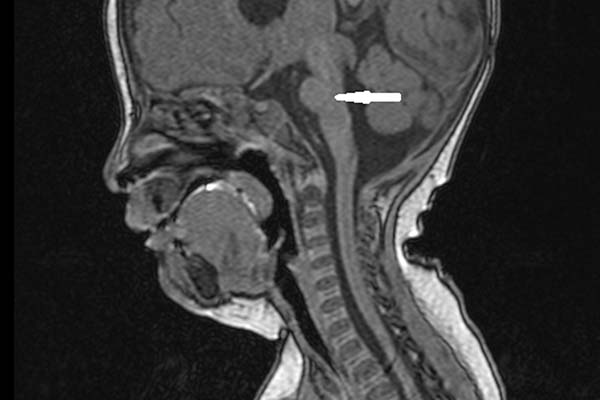Keywords
Abstract
α-Dystroglycanopathy is a newly emerging subcategory of autosomal recessive inherited muscular dystrophies which encompasses a wide spectrum of clinical severity. Mutation of at least 18 genes which are responsible for O-mannose glycosylation of α-dystroglycan has been linked to these congenital muscular dystrophy phenotypes. α-Dystroglycan-related congenital muscular dystrophy (αDG-CMD), which may be associated with multisystem involvement, poses a challenge in perioperative management. Yet, there is a dearth of resources available for reference. We report successful anaesthesia for a 6-year-old child with αDG-CMD who underwent bilateral hamstring lengthening, left Achilles tendon lengthening, and above-the-knee fibreglass for bilateral hamstring tightness. Anaesthesia was performed using total intravenous anaesthesia (TIVA) without muscle relaxant. Bilateral sciatic nerve blocks were performed for postoperative pain control, allowing opioid-free analgesia. The patient was extubated at the end of the surgery. Perioperative considerations in αDG-CMD include anticipation of difficult airway, maintenance of thermoregulation and precautions against malignant hyperthermia with the employment of TIVA, techniques that avoid opioids and neuromuscular blocking agents (particularly suxamethonium), as well as minimizing the risk of aspiration and of raised intracranial pressure.
References
Godfrey C, Foley AF, Clement E, Muntoni F. Dystrogycanopathies: coming into focus. Curr Opin Genet Dev. 2011;(21):278-285. https://doi.10.1016/j.gde.2011.02.001
Taniguchi-Ikeda M, Morioka I, Iijima K. Mechanistic aspects of the formation of α-dystroglycan and therapeutic research for the treatment of α-dystroglycanopathy: A review. Mol Aspects Med. 2016;(51):115-24. https://doi.10.1016/j.mam.2016.07.003.
Vajsar J, Schachter H. Walker-Warburg Syndrome. Orphanet J Rare Dis. 2016;(1):29. https://doi.org/10.1186/1750-1172-1-29
Kose EA, Bakar B, Ates G, Aliefendioglu D, Apan A. Anaesthesia for a child with Walker-Warburg syndrome. Braz J Anaesthesiol. 2014;64(2):128-130. https://doi.10.1016/j.bjane.2012.12.002
Jagannathan N, Sohn L, Fiadjoe JE. Paediatric difficult airway management: what every anaesthetist should now! Br J Anaesth. 2016;117(S1):i3-i5. https://doi.10.1093/bja/aew054
Davis PJ, Brandom BW. The association of malignant hyperthermia and unusual disease: when you’re hot you’re hot, or maybe not. Anesth Analg. 2009;109(4):1001-1003. https://doi.10.1213/ane.0b013e3181b493d4
Valk MJA, Loer SA, Schober P, Dettwiler S. Perioperative considerations in Walker-Warburg syndrome. Clin Case Rep. 2015;3(9):744-748. https://doi.10.1002/ccr3.334
College of Anaesthesiologists AMM, Malaysian Society of Anaesthesiologists MSA. Total intravenous anaesthesia for paediatrics: a practical guidebook. 2016
Marsh S, Ross N, Pittard A. Neuromuscular disorders and anaesthesia part 1: generic anaesthetic management. Continuing Education in Anaesthesia Critical Care & Pain. 2011;11(4):115-118. https://doi.org/10.1093/bjaceaccp/mkr020
Orphananesthesia [Internet]. Germany: German Society of Anesthesiology and Intensive Care Medicine (EU). [cited 2018 Sept]. Available from: https://www.orphananesthesia.eu/en/rare-diseases/published-guidelines/walker-warburg-syndrome/346-walker-warburg-syndrome/file.html







